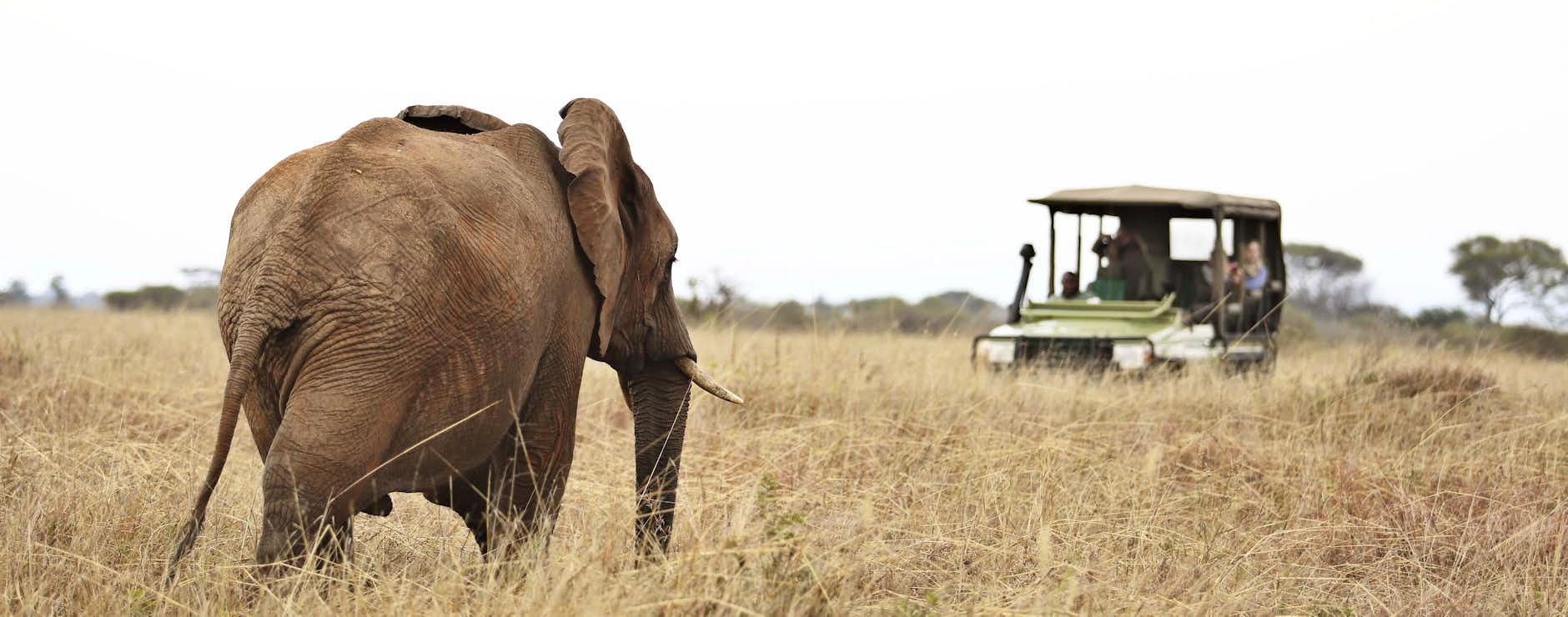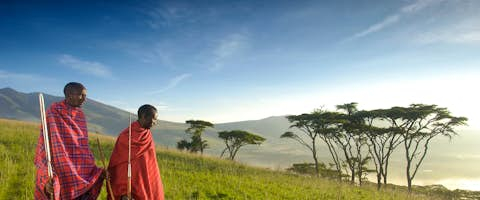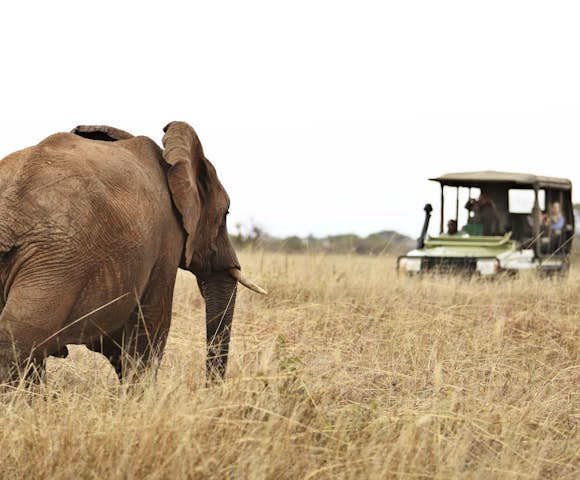Popular Trips to Tanzania
The tours below showcase just some of what is possible. Use these itineraries as starting points, or to draw inspiration. Then get in touch, and let our expert team help craft the perfect itinerary for you.
Tarangire, at a glance
Tarangire National Park boasts some of the highest animal densities and most stunning landscapes in Tanzania. Its proximity to Arusha makes it easily accessible, and it's often combined with the Serengeti and the Ngorongoro Conservation Area, completing Tanzania's northern safari circuit.
Tarangire is the sixth biggest park in Tanzania at 2,850 km².
It takes its name - as well as its game wealth - from the Tarangire River which flows through the park, attracting elephants and many other animals.

Reasons to visit Tarangire
Tarangire has some of the highest elephant populations in the country. During peak migration from July to October, around 5,000 of these gentle giants will migrate to Tarangire - you can sometimes see groups of 300 elephants at once.
It's not just elephants that migrate across these plains. You'll also find plenty of other mammals including lions, zebras and antelopes.
The vast grasslands and Baobab trees create a rugged, 'Out of Africa' feel that's quite distinct amongst Tanzania's national parks.
It is only a short drive from Arusha on tarmac roads, making for a relatively easy-going journey, and perfect for a short safari of one or two days after a Kili hike or other safaris across Tanzania.

Wildlife in Tarangire National Park
Tarangire National Park is famous for the thousands of elephants that come down to the park during the dry season in search of water, but there are also plenty of wildebeest, zebras, giraffes, buffalo and hippos.
Lions are often sighted, and you might see leopards and cheetahs patrolling the grasslands, or perched in a tree. Wild dogs have been spotted before, but you have to get lucky to find them.
The park is also a great birding destination, with over 500 species living in Tarangire.

When to visit Tarangire National Park
The best time to visit Tarangire National Park is during the dry season from June to October. These are the best months for wildlife due to migratory patterns, and the short grasses make game viewing even easier.
The animals flock towards the Tarangire river for water, allowing for easy sightings.
In order to see the big herds of elephants, we recommend visiting towards the latter period of the dry season (September/October).
November can be especially cheap, as it is out of peak season but tends to still be quite dry before the short rains hit. The low season, from late November to May, is great for bird watching as the area is wet, green and luscious.

Accommodation in Tarangire National Park
Most travellers tend to remain in the north of the park near the Tarangire river, but the south is equally beautiful.
Your accommodation will normally be luxury tented camps. Some of our favourites here include:
- Kuro Tarangire, Swala Safari Camp and Oliver's Camp are high-end options, and some of the best bases in the park.
- Mbali Mbali Tarangire River Camp offers stunning views over the river and a pool for a moderate price in the northern part of the park.
- Tarangire Treetops is one of the most unique accommodation options in the park, with rooms built amongst thousand-year-old Baobab trees.

Trips to Tanzania
The tours below showcase just some of what is possible. Use these itineraries as starting points, or to draw inspiration. Then get in touch, and let our expert team help craft the perfect itinerary for you.
Ready to plan your African adventure?
Listen
We'll spend some time listening to your aspirations, then discuss the kind of experience that might suit you.
Match
Next we'll discuss the options, shortlist the best trips for you and present you our impartial recommendations.
Reserve
We'll place a 24 hour hold on your preferred option - without obligation - whilst we talk through the details.
Whatever your budget, group size, length of stay, preferred activity or appetite for adventure, we can help.





























